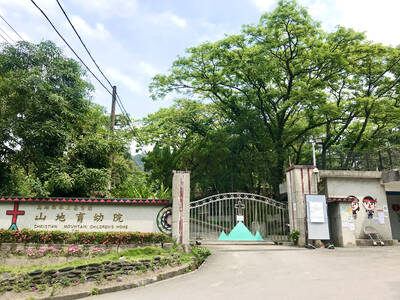VIEW THIS PAGE On a dusty track on the Indonesian island of Rinca, a local guide tells a group of tourists about the life cycle of the Komodo dragon, the island’s famous lizard, which can kill a water buffalo with a single bacteria-laced bite.
Halfway through his explanation, the guide stops abruptly, staring at the ground just past his ring of listeners. He raises his forked staff and signals to the visitors to move toward him. Behind the group, motionless and camouflaged against sprawling tree roots, an adult dragon lies within striking range of several of the tourists, including me.
When they’re not dismembering a buffalo, lumbering along a path or lying in the sun digesting, Komodo dragons, which can grow to more than 3m long and weigh 90kg, can be next to invisible in the dusty wooded scrub of Rinca and neighboring Komodo Island.
The camouflage allows them to catch prey as fast as a deer, with one sudden lunge and a poisonous bite. Once the lethal cocktail of infectious saliva enters the victim’s blood, it is only a matter of time before the victim dies. The dragon is prepared to wait days for its dinner.
I had been to Komodo Island the day before with a group from the Silolona, a chartered yacht based on a traditional Phinisi trading vessel built by American Patti Seery. We had landed in the late afternoon so Seery could do the paperwork for sailing in the park area, which includes Komodo, Rinca and a few other smaller islands together with their surrounding marine environment.
GOURMET DRAGONS
Finding the world’s largest lizard isn’t hard. They simply hang out, occasionally under the stilted houses of Komodo village, the largest settlement in the park. The dragons are attracted by the smell of cooking and perhaps the chance to grab an unattended goat or chicken, park guides said.
Even lumbering lazily around the houses, Komodo dragons are an imposing sight. They have long, hooked claws and sharp teeth and can run at up to 18km per hour.
In 2007, the death of nine-year-old Mansur (many Indonesians only go by one name) sparked controversy over the management of the park. The boy had gone into a field near the village of Komodo to answer the call of nature when he was attacked by a dragon that bit his stomach and crushed his skull on a rock, according to park rangers. Villagers drove the reptile away, but the boy died.
Some locals blamed the park conservation rules that include a ban on keeping dogs, which used to deter dragons from entering the village. A natural fence of kedondo trees has been planted to prevent lizards from entering the village, according to Marcus Matthews-Sawyer, senior adviser for tourism, marketing and communications at PT. Putri Naga Komodo — a joint venture between the national park and Virginia-based conservation organization, The Nature Conservancy — which manages tourism in the reserve.
STRAINED RELATIONS
The relationship between conservationists and villagers is likely to be further strained as the human population grows, taxing the island’s resources. Komodo village has more than doubled in size in the past 13 years, partly because local residents have access to the park’s rich fishing grounds.
Still, Mansur was only the second recorded death from a dragon attack since the park opened in 1980, said Matthews-Sawyer.
A plain white cross commemorates Komodo’s most famous victim, 74-year-old Rudolf von Reding. The story goes that the Swiss baron sat down to rest in 1974, urging fellow tourists to continue without him. When they returned, the only traces left were his spectacles and camera, or, in more dramatic versions of the tale, a shoe and a blood-spattered rock.
In any case, the baron was never seen again and was presumed to have been taken by a dragon.
Seery recommended we skip the more touristy trails of Komodo and head instead to smaller Rinca to see the dragons in their natural setting in the hills.
POKING THE BEAST
A dozen of us took two speedboats to Rinca’s small jetty the next day and hired guides for the walk into the island’s dry forest. My guide, Saverinus Mabu, took one of the long sticks with forked ends from a rack as we prepared to set off. How, I asked, would that protect you from a charging 140kg dinosaur?
Mabu made a jabbing motion with the stick and said that if you poked the dragon in the throat, it would withdraw. I remained uneasy about the idea that my professional protection from a bone-crunching cocktail of lethal bacteria was a lightly built 27-year-old with a pointed stick.
At the ranger station we heard news that there was a fresh kill 2km up the track and that several dragons had gathered to feed. By the time we reached the spot beside a dry river bed the smell of blood had traveled and there were as many as 30 dragons, from young two-year-olds to monster males, ripping flesh and bones off the carcass of a water buffalo. Mabu said the animal had been bitten two weeks ago and died that morning.
BUFFALO BANQUET
The feasting was frenetic. The lizards crawled over each other to attack the rapidly diminishing carcass of the unfortunate beast, swallowing whole legs, hoof and all, in one go. Small dragons darted in for pieces that flew out of the orgy, careful not to get too close to their bigger cousins. (They are happily cannibalistic and newly hatched dragons spend two years living in trees to avoid being eaten by their parents and other adults.)
It was a great opportunity for a photo, though my suggestion to fellow traveler Peter Brown to move back a couple of paces so that I could get a better shot of him with the dragons was met with a wry smile.
The camera does, however, narrow your field of vision. As I crouched to get a close-up shot, I felt a sharp pain in my side. I looked up to find that one of the guides had prodded me with his stick. He motioned with his head at something behind me, where a large male was sauntering down the gulley to join the banquet.
I scrambled out of its way. Maybe those sticks are useful.VIEW THIS PAGE

May 18 to May 24 Pastor Yang Hsu’s (楊煦) congregation was shocked upon seeing the land he chose to build his orphanage. It was surrounded by mountains on three sides, and the only way to access it was to cross a river by foot. The soil was poor due to runoff, and large rocks strewn across the plot prevented much from growing. In addition, there was no running water or electricity. But it was all Yang could afford. He and his Indigenous Atayal wife Lin Feng-ying (林鳳英) had already been caring for 24 orphans in their home, and they were in

On May 2, Chinese Nationalist Party (KMT) Chairman Eric Chu (朱立倫), at a meeting in support of Taipei city councilors at party headquarters, compared President William Lai (賴清德) to Hitler. Chu claimed that unlike any other democracy worldwide in history, no other leader was rooting out opposing parties like Lai and the Democratic Progressive Party (DPP). That his statements are wildly inaccurate was not the point. It was a rallying cry, not a history lesson. This was intentional to provoke the international diplomatic community into a response, which was promptly provided. Both the German and Israeli offices issued statements on Facebook

President William Lai (賴清德) yesterday delivered an address marking the first anniversary of his presidency. In the speech, Lai affirmed Taiwan’s global role in technology, trade and security. He announced economic and national security initiatives, and emphasized democratic values and cross-party cooperation. The following is the full text of his speech: Yesterday, outside of Beida Elementary School in New Taipei City’s Sanxia District (三峽), there was a major traffic accident that, sadly, claimed several lives and resulted in multiple injuries. The Executive Yuan immediately formed a task force, and last night I personally visited the victims in hospital. Central government agencies and the

Australia’s ABC last week published a piece on the recall campaign. The article emphasized the divisions in Taiwanese society and blamed the recall for worsening them. It quotes a supporter of the Taiwan People’s Party (TPP) as saying “I’m 43 years old, born and raised here, and I’ve never seen the country this divided in my entire life.” Apparently, as an adult, she slept through the post-election violence in 2000 and 2004 by the Chinese Nationalist Party (KMT), the veiled coup threats by the military when Chen Shui-bian (陳水扁) became president, the 2006 Red Shirt protests against him ginned up by